Tibet's Lost Treasure
Updated: 2015-09-11 11:23
By Luo Wangshu and Da Qiong(China Daily USA)
|
||||||||
|
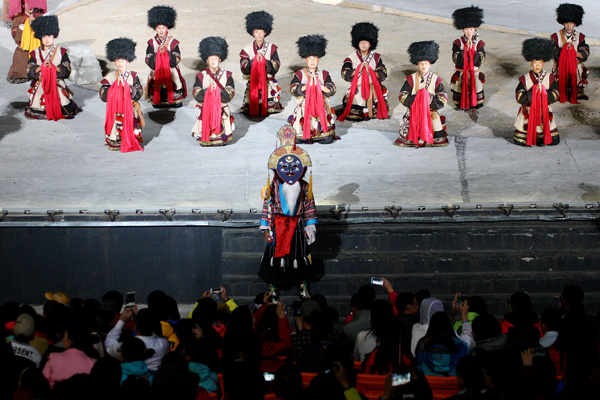 Actors perform the play Princess Wencheng in Lhasa on Sept 5. Wang Zhuangfei / China Daily |
|
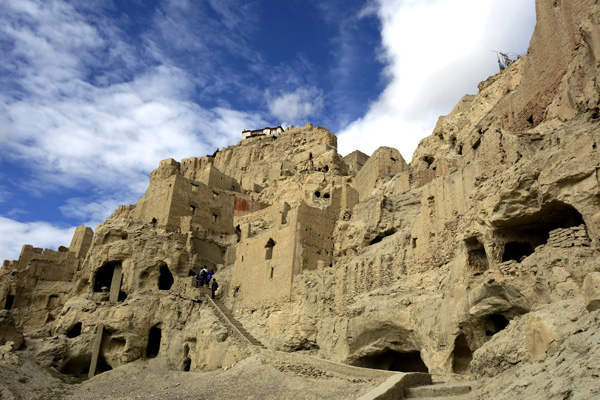 The remains of the ancient Guge kingdom in Ngari prefecture in the Tibet autonomous region. Luo Wangshu / China Daily |
The ruins of an ancient Tibetan kingdom are set to become a major tourist attraction, report Luo Wangshu in Zanda county, Ngari prefecture, and Da Qiong in Lhasa.
Kalzang Rinzin knows every stone in the ruins of the Guge kingdom, a 10th century realm that existed in what is now Ngari prefecture in the western part of the Tibet autonomous region. The suntanned 37-year-old has lived in the former royal palace for nearly seven years and has examined every mural and statue in the assembly halls.
"The single remaining pedestal is fashioned in the shape of a lion's paw. If you look carefully, you can still see the claws. Unlike the women in murals in Lhasa, the women in the Guge murals have wasp waists, what we call the Tibet-Kashmir style," he said.
He can talk about Guge for hours because in his eyes, the remains of this ancient kingdom are a precious treasure trove that abounds with mysterious legends.
Guge, a powerful kingdom with more than 100,000 subjects, was located in present-day Zanda county. The ruins, which are listed as a national heritage relic, were once full of relics, including frescoes and sculptures, but the climate and human damage have resulted in the destruction of many priceless items.
The rock, a highly porous form of clay, is prone to water damage. "The summer palace has suffered after being inundated by heavy rain in recent years," said Lotan, head of the Zanda Administration of Cultural Heritage.
"Recently, Zanda has had much more rain than ever before, and the fortress's drainage system wasn't designed to cope with such heavy weather," he said, adding that a few sections of the former palace have been washed away or eroded by strong winds. Besides, a large number of murals were destroyed during the "cultural revolution" (1966-76).
To protect the ruins and remaining relics, the regional government invested more than 57 million yuan ($9 million) during the 12th Five-Year Plan (2011-15) to set up a preservation project that was completed in October last year.
Preservation attempts started in the 1980s, according to Lotan, and in 1986 more than 500,000 yuan was allocated for the maintenance of the assembly halls and temples. In 1997, the prefecture government spent a further 2 million yuan to reinforce the structure and improve the drainage system.
A landmark in history
The Guge kingdom was an important landmark in the history of Tibet. It was founded by Nyi Ma Mgon, the great-grandson of Langdarma, the last monarch of the Tibetan Empire, who rejected Buddhism in favor of the ancient Bon religion. When Langdarma was assassinated, Nyi Ma Mgon fled to the Ngari area, married the sister of a local ruler and later established the Guge kingdom.
He divided his territory into three parts and gave one-third to each of his sons. The second son inherited the Guge kingdom, which was conquered by the central government of Tibet under the leadership of the fifth Dalai Lama in the late 17th century.
"Legends say the Guge kingdom disappeared in just one day, but the story is still unclear. The hundreds of thousands of people of the kingdom appear to have vanished overnight, but no one knows where they went," said Ma Qinglin, Party chief of Zanda county. Historians say the kingdom was conquered quickly after a short, brutal battle.
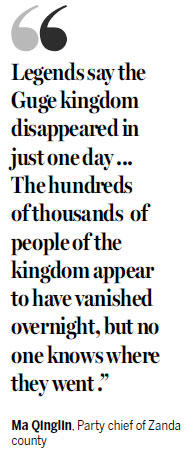
The local people say a cave filled with the remains of soldiers and residents is hidden at the base of the fortress, which is believed to be the place where the last Guge king surrendered as he watched his people being massacred.
Bringing people 'home'
Kalzang Rinzin's "home" is pyramid shaped and numerous tunnels and caves have been carved into the soft rock, which rises about 300 meters above the clay forest.
"The common people lived at the base, the monks and officials lived in the middle and the royal family resided at the very top in their own summer palace," Kalzang said, adding that legend says the last queen committed suicide by leaping from the top of the structure when the kingdom was conquered.
Kalzang Rinzin and his family were once the only people living in the fortress, and it took hours to walk through the clay forest to the nearest village to buy groceries. He has played many roles at the fortress, from tour guide to guard, and is famous locally because he has never been afraid to walk through the 56-hectare "forest" in the dark.
He now is head of the local tourism bureau and oversees all aspects of the administration, including training more guides to introduce the Guge kingdom to a greater number of visitors. At present, the ruins receive about 60 or 70 tourists a day.
One visitor, Gang Shou-sheng, a history teacher from Shandong province, was unable to express his feelings after he visited the ruins. "I don't know how to explain my impressions of this ancient kingdom. I feel that if I say anything, I will only belittle this magnificent edifice," he said.
Palden Nyima contributed to this story.
Contact the writers through luowangshu@chinadaily.com.cn
- Russian military experts present in Syria
- Norway PM says Norwegian citizen taken hostage in Syria
- Hungarian TV journalist fired for tripping up fleeing migrants
- Leaders from EU, Russia, Ukraine to meet in Paris in Oct
- Music is food for the soul for young Chinese violinist
- Australia's Tasmania, China agree to 'work together' on Antarctic expeditions

 Americans mark the 14th anniversary of 9/11 attacks
Americans mark the 14th anniversary of 9/11 attacks
 7 ways Chinese travelers benefit from the US visa extension
7 ways Chinese travelers benefit from the US visa extension
 In pictures: School life from the lens of sports teacher
In pictures: School life from the lens of sports teacher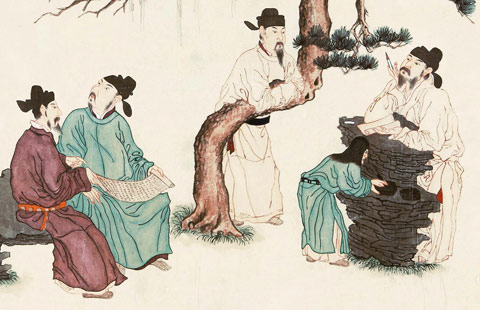
 Ten treasures from Palace Museum to look forward to
Ten treasures from Palace Museum to look forward to
 Top 10 richest Chinese tech giants
Top 10 richest Chinese tech giants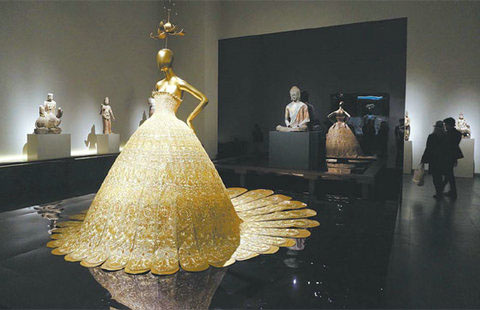
 10 years of Sino-US exhibitions
10 years of Sino-US exhibitions
 Greedy panda eats ten boxes of honey
Greedy panda eats ten boxes of honey
 Soldiers in Sansha guard the islands
Soldiers in Sansha guard the islands
Most Viewed
Editor's Picks

|

|

|

|

|

|
Today's Top News
Over 14,500 Chinese pilgrims in Mecca
Xi's trip to US to 'chart course' for ties
US to accept 10,000 Syrian refugees, says White House
WWII veterans awarded medals for victory efforts
LA still a top destination for tourists even as China's economy slows
New iPhones unveiled
Inside look at Apple's newly-launched products
Peking Opera performance thrills NY
US Weekly

|

|







